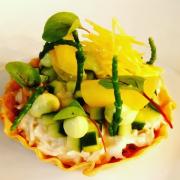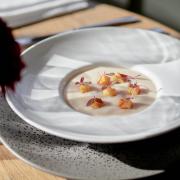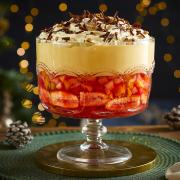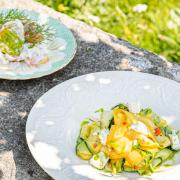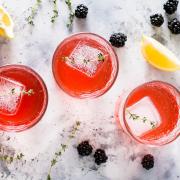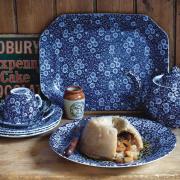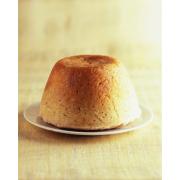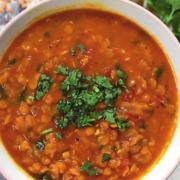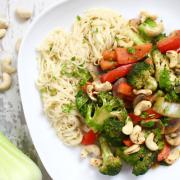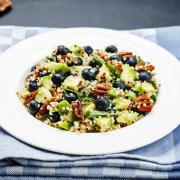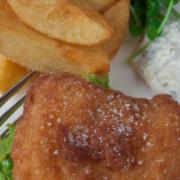They say if you can't stand the heat, stay out of the kitchen. Our Clive has been braving any number of different challenges over the past few years and now finishes this series with the ultimate challenge, making the staff of life – bread
It’s more than four-and-a-half years since I courageously clambered into the cockpit of a glider just east of Storrington to launch this series. A mere callow youth back then, little did I know that I was embarking on the first of 55 challenges that would see me flamenco dancing in Lewes, fly-fishing in Arundel, roller-blading in Eastbourne, jiving in Battle, windsurfing in Camber, nordic walking through Ashdown Forest, rowing up the Arun, cycling the entire length of the Sussex coast and so on and so on.
Conscious of being a role model for thousands of wrinkled readers, I like to think that I have demonstrated that carrying a bus pass is no barrier to acquiring a new skill. In essence, I have attempted to nail the lie that you can’t teach an old dog new tricks whilst simultaneously highlighting the extraordinary range of activities on offer here in good old Sussex.
To underline my avowed belief that age is no barrier to meeting fresh challenges, next month I shall commence a completely new series. Meanwhile there is the important matter of the very last or, indeed, ultimate challenge. Among the candidates more or less seriously considered was bungee jumping off Beachy Head, an ultrathon, sky-diving and, possibly the toughest of them all, trying to persuade Brighton council to let me off a parking ticket. Keen to end the series on a triumphant note rather than in abject failure, I sensibly searched for something where meeting a violent death was an unlikely outcome. Believing that we are too often inclined to leave to others what we could easily do ourselves, another important consideration was a desire to demonstrate that a greater degree of self-sufficiency is more easily achievable that we might imagine. And what more powerful affirmation of our competence to look after our own greatest needs could there be than producing the very staff of life?
Since the kitchen is not a place in which I feel especially comfortable and having already demonstrated on a previous cookery course a dramatic lack of culinary talent, the challenge of baking bread is not one that I can afford to take lightly. And so it is with a large spoonful of anxiety and a pinch or two of trepidation that I enter the Lighthouse Bakery near Bodiam Castle to meet expert baker Elizabeth Weisberg and four fellow students; Angela from near Chichester, Mike from Hove, Kerry from Clapham and Fiona his 13-year-old daughter. Although having travelled the least, I’ve nevertheless managed to arrive last.After introductions, a cup of coffee and some delicious bread, naturally, Elizabeth takes us on a ‘health and safety’ tour of the bakery – don’t trip on the step, stick your hands in the mixer or heads in the ovens. We wash, don aprons and sit back down as Elizabeth talks us through the philosophical and practical aspects of baking.“Baking bread is one of the most gratifying and fulfilling things you can do in your kitchen. The simple act of mixing together just four disparate ingredients – flour, water, yeast and salt – creates a seemingly magical amalgam, transformed by heat into a tasty loaf. It can satisfy on many levels, physical and emotional, creative and practical. It will also connect you intimately both to the raw ingredients and to an unbroken chain of bread-making history, which has been around almost as long as humankind.”
Apart from the fact that she’s American, what strikes me most about Elizabeth as she talks us through the raw ingredients is that she is a wonderfully articulate and gifted teacher who combines great knowledge with delightful humour and boundless enthusiasm. If only she had taught me physics at school I would surely now understand Boyle’s Law and, possibly, electricity as well. As it is, she clears up the mystery that has always surrounded yeast – what it is and what it does. Gluten, protein, fermentation, everything is explained in a clear and simple way that both young Fiona and old Clive can grasp. “Food is love,” explains Elizabeth. "If you make someone a loaf of bread they’ll love you even if it looks a little rustic."Fired by her passion, the five of us leap from our chairs and gather round a large work surface to make a classic white loaf. Just as old as bread-making, division of labour is an effective and efficient way of doing things and we’re each assigned a different ingredient to first weigh and then add to the mix. I’m given a grey block of fresh yeast that I now understand in a more profound and meaningful way than would have seemed possible even half an hour ago.
Recognising that sloppiness or inaccuracy would sabotage everyone else’s efforts as well as my own, I take an absurd amount of care with the weighing before tipping my crumbly yeast in with the flour and salt, and passing the bowl to Kerry and Fiona to add the water. This exercise is repeated four times so that each of us eventually has a bowl of our own to plunge our hands into and play with…er, I mean mix.
Although the only one without the foresight to have rolled up his sleeves and despite the fact that I seem to be suffering much more than the others from the yucky stuff sticking to my fingers, I eventually produce a ball that possesses recognisable dough-like qualities. We’re not finished with it yet, however, as it now must be energetically kneaded in order to stretch the gluten strands. A tiring process that is dangerously close to hard work, kneading is nevertheless wonderfully therapeutic and stress relieving. All the anxiety I felt earlier about accurately measuring the yeast evaporates as I bash the ball of dough rhythmically to the left and then to the right. After 15 minutes, I’m tired but happy.Possibly equally weary, the dough is now left alone for an hour or so to recover and allow the good old yeast to continue to ferment, the gluten to soften and the flavour to develop. But there’s no rest for us as we begin weighing ingredients for a wholemeal loaf. Not unsurprisingly we use wholemeal flour and the quantities of the other ingredients are slightly different but the principals and process are the same except that Elizabeth introduces us to the wonderful world of the automatic mixer. Although it lacks the romance of the human hand, the mixer does an efficient job of first mixing and then kneading the dough.
Now feeling ready for a greater challenge, we begin making what we in the baking business call an ‘enriched dough’. In this instance and at the behest of young Fiona, it’s for chocolate bread and so, as well as the usual suspects, we have to add sugar, cocoa powder, chocolate chips, egg yolks and butter.
After a welcome break for a delicious lunch, the pace accelerates and the various doughs we made earlier are plonked it front of us to be punched down, a sort of deflating process that surprisingly re-invigorates the yeast. After rising again, the dough is divided before the rather satisfying moulding stage when it’s sculpted into a suitable shape. Proving is the final rising and fingers are poked to check that the indentations don’t rebound before the dough is ruthlessly scarred with a knife before at last being consigned to the oven. What emerges tastes delicious and is several cuts above the average loaf.
If your like Clive and have baked something we would love you to post your pictures on this page.



